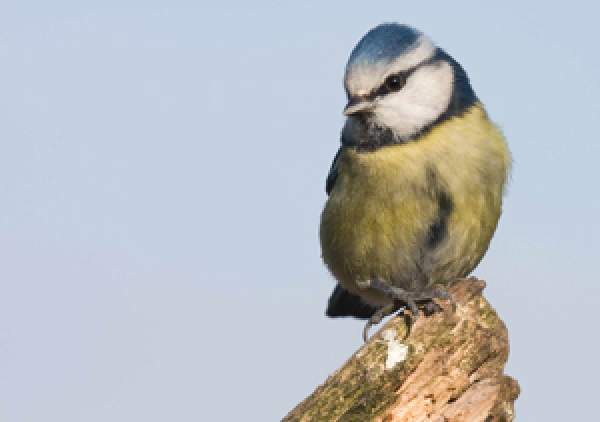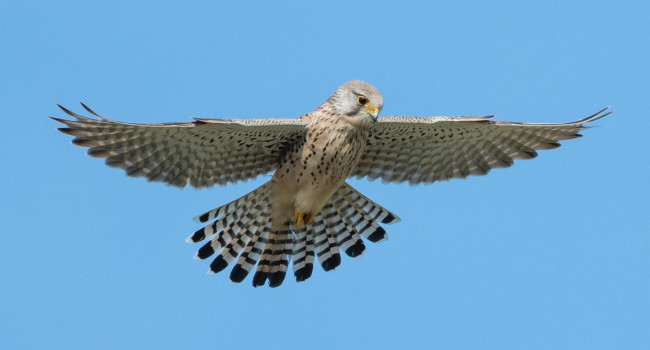Blue Tit
Cyanistes caeruleus

Like most other members of the tit family, Blue Tits are small birds, with strong bills and a rather plump but lively appearance. One of the most noticeable features is the strong head pattern; the dark blue-black eyestripe and the brighter blue ‘skull cap’ are set against the white cheeks and forehead.
The blue-green back becomes a brighter blue on the wings, while the underside is a bright lemon yellow. Although male Blue Tits are usually brighter in colour than the females, this difference is not normally apparent in the field. Young Blue Tits are duller in appearance than the adults and have pale yellow rather than white cheeks.
Although Blue Tits are really birds of deciduous woodland, they also use parkland and gardens, making them one of the most common garden birds. Blue Tit nestboxes in gardens are generally less successful than ones in native deciduous woodland, because the native woodlands support a huge number of caterpillars. Blue Tits need these to feed to their developing chicks. Gardens provide very little invertebrate food compared with that available in woodland. However, the food that we provide at our feeding stations can be important for Blue Tits, particularly during the winter and early spring, and there is mounting evidence that garden Blue Tits survive better than their country cousins.
You may not realise just how many Blue Tits use your garden through the course of a day because they all look the same! Bird ringers operating nets in gardens have found that many dozens of Blue Tits can pass through a garden on a single day.
Find out more about Blue Tits on BirdFacts and the Wider Countryside Report.






Share this page